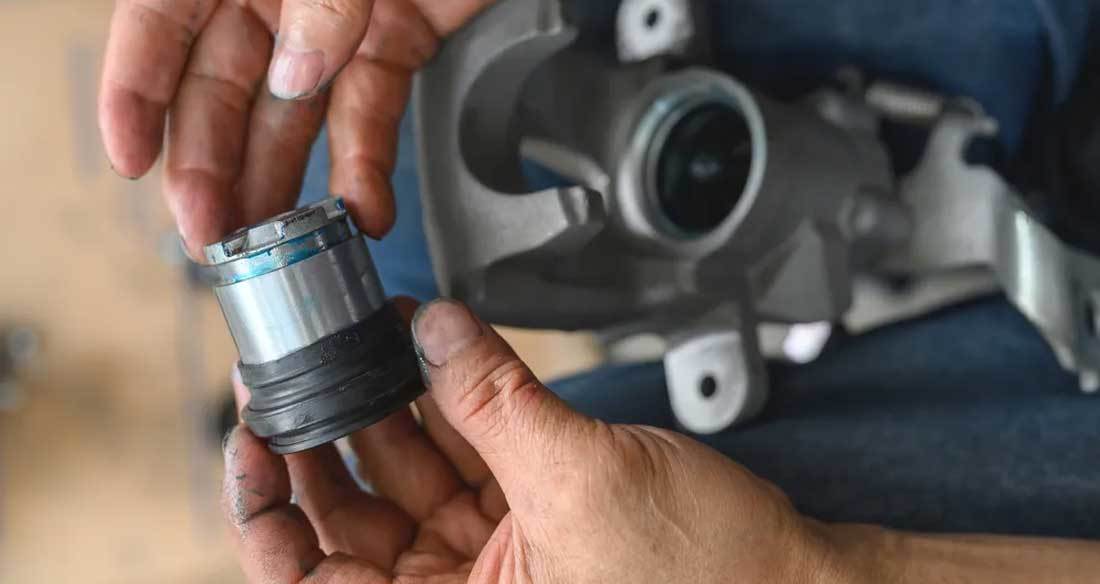How to Lubricate Brake Calipers
An important aspect of maintaining a car is making sure the brakes are properly lubricated and that there is no rust build-up. Rust will lead to noise during braking as well as damage your car parts.
There is also the risk that the brakes will not work as effectively, causing your car to not stop properly at times. So one must know how to lubricate the brake caliper piston, which can be done by following some of the guidelines in this article.
So, in this article, we’ll tell you how to lubricate brake caliper piston.Let’s begin!
How to Lubricate Brake Callipers
There are some necessary steps you need to take before you can even get to lubricating brake calipers. This includes getting the proper lubricant and removing rust from the brake calipers. What lubricant you should use and how to remove rust are mentioned and explained below:

Make Sure You Have the Proper Lubricant
The brakes of a car heat up quite a bit to generate the necessary friction to stop the vehicle. Proper lubricant for brakes must be enough heat resistant so that they don’t melt and clog the system when braking too hard or multiple times.
Also, petroleum-based lubricants are counterintuitive as most brake systems are hydraulic. There are two types of lubricants you should have a supply of:
For metal-on-metal lubrication, you should have a stock of dry film lubricants. These usually contain graphite or molybdenum disulphide.
And for rubber and plastic components that are present in most hydraulic braking systems, you will need silicone-based or synthetic lubricants that do not contain petroleum.
Remove the Rust
Before applying lubricant on the metal, you should remove the layer of rust on it to ensure effective lubrication.
Use an aerosol cleaner and then wipe the rotor clean with a rag. Give it some time for it to dry. Then use an abrasive to remove the rust.
Finally, scrub with steel wool. You can also alternatively use a die grinder. Also, do a final clean-up of the calipers and the parts to ensure that the layer of lubrication applied is smooth.
You’ll find two types of variations of brake calipers. One type is the floating calipers, and the other one is fixed calipers. To properly lubricate them follow the guidelines stated below:
Step 1
1.
Take apart the various parts of the brake caliper following instructions for your specific model.
Rust Removal Using White Vinegar On Rusty Brakes
Step 2:
2.
When taking apart the brakes, you will notice the pads that touch the rotors and cause the car to stop.
Never lubricate this part. This will reduce the friction and braking ability of your car and will no doubt lead to accidents. You can clean it but never lubricate this part as it will cause your brakes to malfunction.
Step 3:
3
Take your brake callipers and remove the screws and pistons so that it is easier to lubricate. Apply brake lube to the screws at the top and bottom of the caliper.
For floating calipers, remove the pistons from the side and then lightly apply braking lube. Then insert the pistons gently and then check to see how easily they move back and forth.
Since floating calipers rely on these pistons to work, it is generally advised to check if they are moving back and forth easily as in the case that they jam, they will cause noise, and you will need to replace the calipers.
Step 4:
4.
You’ll also see a frame where the caliper sits upon. Generally, it is metal, and you’ll notice wear marks on them or some rust. Follow the procedure on removing the dust or use sandpaper to remove the marks before applying a lubricant to assure proper lubrication of the frame.
Finally, check all the parts by moving them back and forth to ensure they’re properly lubricated. Press your fingernail lightly and drag it across surfaces as a check to see if the surfaces have been smoothened and that the rust has been removed.
Video on How Often to Change Brake Fluid
Tips on Applying Lubricant
The previous section gave you a general idea about where you should apply braking lube. Although you know where to apply the braking lube, it will not do you any good to just spray it and brush it across the parts. There are some things to remember when applying it.
• Use a Wooden Tongue Depressor
While you can opt to smear the surfaces using your finger, you can generally opt for a much finer approach by using a wooden tongue depressor. Squeeze some brake lubricant from the canister you bought or have and lightly brush the surface with your tool.
• Use Thin Coating
Apply small amounts of lubricants. You will want a thin coating. A bigger coating is harder to dry, and the lubricant will spread over to other parts, often seeping in through holes and gaps and reducing the overall performance.
• Remove the Remnants of Lubricant
Remove excess lubricant using a brush and let the rest of it evaporate slowly. Keep a pan near you to soak up the excess lubricant if necessary.
These tips generally apply to almost all types of brakes with small differences in some parts, and overall they will help you make sure your brakes last for a long time.
Conclusion
Now that you have learned the entire process, what are you waiting for?
Get started right now!
